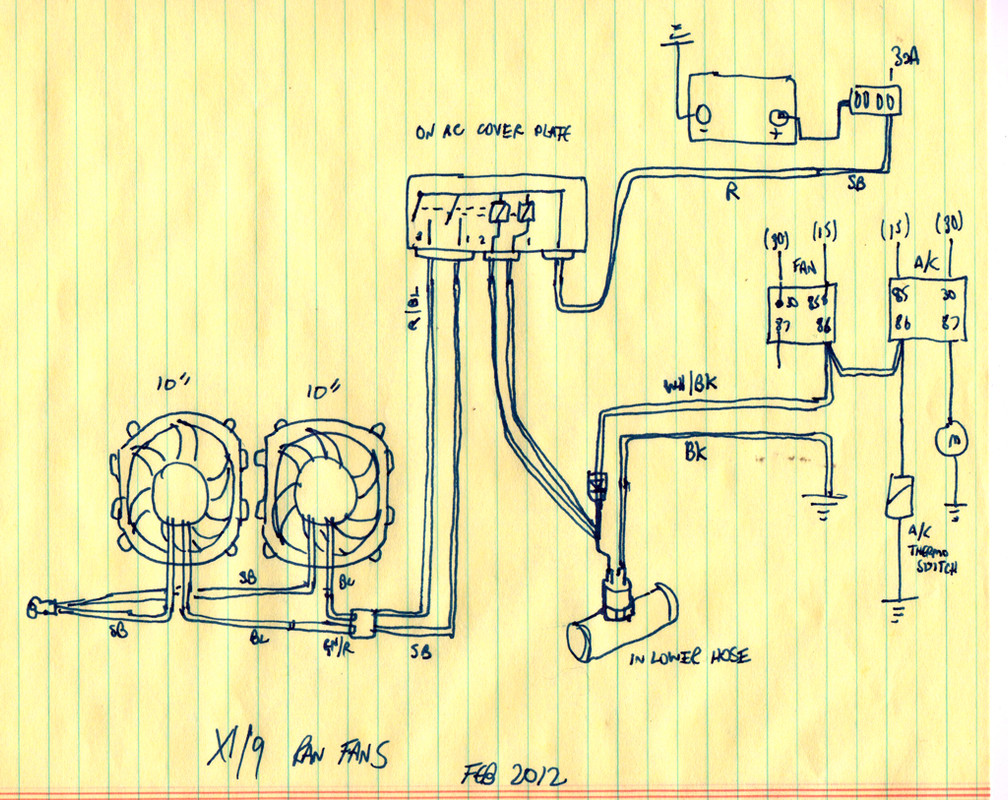JNewm
True Classic
I hesitate to update, knowing that forum members here seem strongly to prefer doing things the Hard-But-Right way instead of the Easy-But-Wrong way... But there may be a bit of useful info in here for future browsers of this thread.
I simply rewired the fans in parallel instead of in series, on the original factory circuit. Flipped the switch and WHOOOM! Full fan speed on both fans, no blown fuse. This circuit appears to run through a 16-amp (stock) fuse, so...
*Potentially Useful Info* my takeaway is that a factory X1/9 fan draws less than 8 amps, even including the initial surge when they flip on. Those suckers can really move some air, though! Take this with a grain of salt, as I know next to nothing about electricity.
It's not the Right Way, but it seems to work for now, allowing me to turn my attention to the broken heater control valve + broken radiator thermoswitch + 10-year-old coolant problem. Once that's solved, I plan to go back and wire in a second circuit/relay for the second fan. For now, though, at least everything is running thru a relay and is fused, so there's that...
I simply rewired the fans in parallel instead of in series, on the original factory circuit. Flipped the switch and WHOOOM! Full fan speed on both fans, no blown fuse. This circuit appears to run through a 16-amp (stock) fuse, so...
*Potentially Useful Info* my takeaway is that a factory X1/9 fan draws less than 8 amps, even including the initial surge when they flip on. Those suckers can really move some air, though! Take this with a grain of salt, as I know next to nothing about electricity.
It's not the Right Way, but it seems to work for now, allowing me to turn my attention to the broken heater control valve + broken radiator thermoswitch + 10-year-old coolant problem. Once that's solved, I plan to go back and wire in a second circuit/relay for the second fan. For now, though, at least everything is running thru a relay and is fused, so there's that...


